Special Report
13 Largest Fish (of any kind) Ever Caught in the US
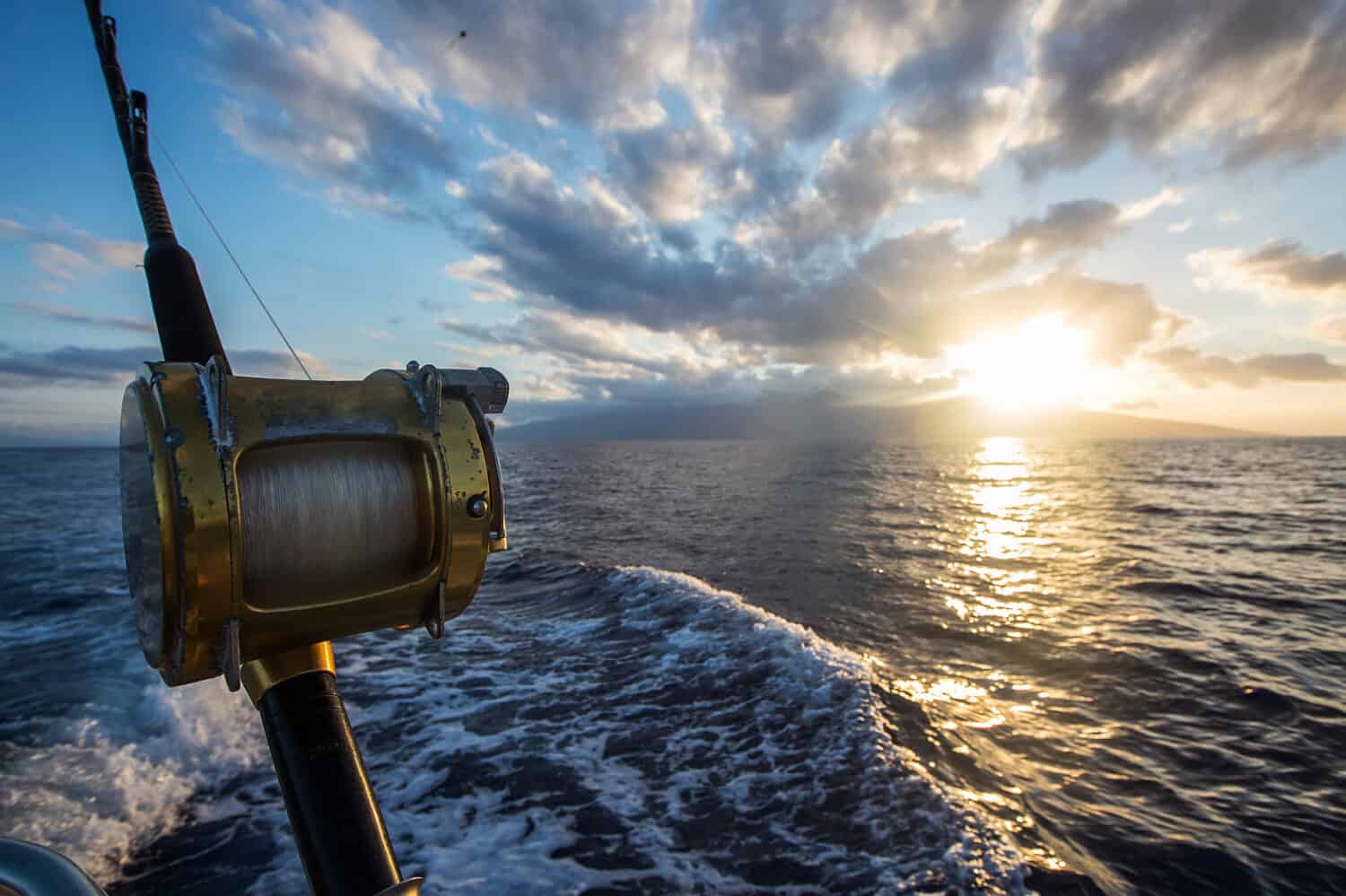
Published:
Last Updated:

Americans love to fish. There are 52.4 million recreational fishermen and fisherwomen in the United States according to a 2023 report from the American Sportfishing Association. To put that number in perspective, there are more anglers than tennis players and golfers combined in the U.S.
These tens of millions of fishermen and fisherwomen often dream of landing “the big one.” Here’s a look at the realizations of some of those dreams. These are 13 of the biggest fish ever caught in the U.S., the largest of which weighed more than a Toyota Prius!

Anglers love to tell stories of their biggest catch, but those stories are all relative. For example, the first fish many American anglers ever catch is the bluegill. Children armed with nothing but a worm and bobber can land these prolific panfish. Bluegills are found in ponds, lakes, streams, and rivers throughout the U.S.
The world record bluegill weighed 4 pounds, 12 ounces. It was caught on April 9, 1950 in Alabama. A typical mature bluegill weighs one pound or less, so this ‘Bama bluegill was an absolute unit. However, it is also nowhere close to the largest fish ever caught in the U.S.
The most popular game fish in the U.S. is the largemouth bass, and it’s not even close. These fish are also found in all 48 contiguous U.S. states. Millions upon millions of American anglers target largemouth bass each year.
A typical largemouth weighs one to five pounds. The biggest largemouth bass ever caught in the U.S. weighed 22 pounds, 4 ounces. It was caught on June 2, 1932 in Georgia. It is tied with a fish caught in Japan for the official world record. (Here’s a more in-depth look at that record largemouth, along with nine other U.S. bass records.) However, this behemoth bass is also nowhere close to the largest fish ever caught in the U.S.
Finding the Largest Fish Caught in the U.S.
Bluegill and bass are wildly popular, but they can’t compare with the biggest fish swimming in U.S. waters. So which fish are among the largest ever caught in the U.S.?
24/7 Wall St. compiled this list by consulting official state fishing records. These records are verified by government agencies in each state. Only fish caught on a rod and reel were considered for the list.
World records were confirmed by the International Game Fish Association (IGFA). This organization is considered sportfishing’s governing body and the official keeper of world fishing records.
The U.S. offers countless opportunities for freshwater fishing. Here are the largest freshwater fish ever caught U.S. waters.


There is a discrepancy between the records held by the Michigan Department of Natural Resources and IGFA. The Michigan state agency lists this 193-pound lake sturgeon as the state record. That fish outweighs the official world record lake sturgeon verified by IGFA by 25 pounds. The fish recognized by IGFA was caught in Ontario, Canada in 1982.
There are any number of reasons why official records may differ for an individual fish. IGFA has stringent rules regarding a world record catch. If those rules are violated, the fish is not verified as a world record. In other cases, anglers may choose to forego the lengthy verification process to document a world record (or they may not be familiar with the process).
It is also worth noting that, while this is the largest lake sturgeon listed in official U.S. state fishing records, a much larger individual fish was documented by a U.S. Fish and Wildlife Service crew in 2021. That lake sturgeon was caught in the Detroit River and weighed an astonishing 240 pounds!

The alligator gar is the largest fish that lives entirely in freshwater in North America. The white sturgeon is sometimes classified as the largest North American freshwater fish, but it is actually anadromous, meaning the fish spawns in freshwater but lives most of its life in saltwater, much like salmon.
The 283-pound world record alligator gar was caught just a few months ago in September 2023. Incredibly, Art Weston landed this fish using only six-pound test line! This gave Weston both the all-tackle and the six-pound line class world records. His alligator gar is the largest catch of a freshwater fish ever documented in the U.S.
Like an alligator, the alligator gar has a long snout that is filled with sharp teeth. The fish is often referred to as a “living fossil.” They can be traced back 100 million years in the fossil record. Modern alligator gar retain many of the characteristics of their ancient ancestors, such as the ability to breathe both air and water.
Texas is an incubator for monster alligator gar. The Sam Rayburn Reservoir (where this record fish was caught) and the Trinity River are famous for giant alligator gar. Since these fish live over 100 years and keep growing throughout their lives, it is conceivable that a 300-pound alligator gar will one day be caught in the Lone Star State.
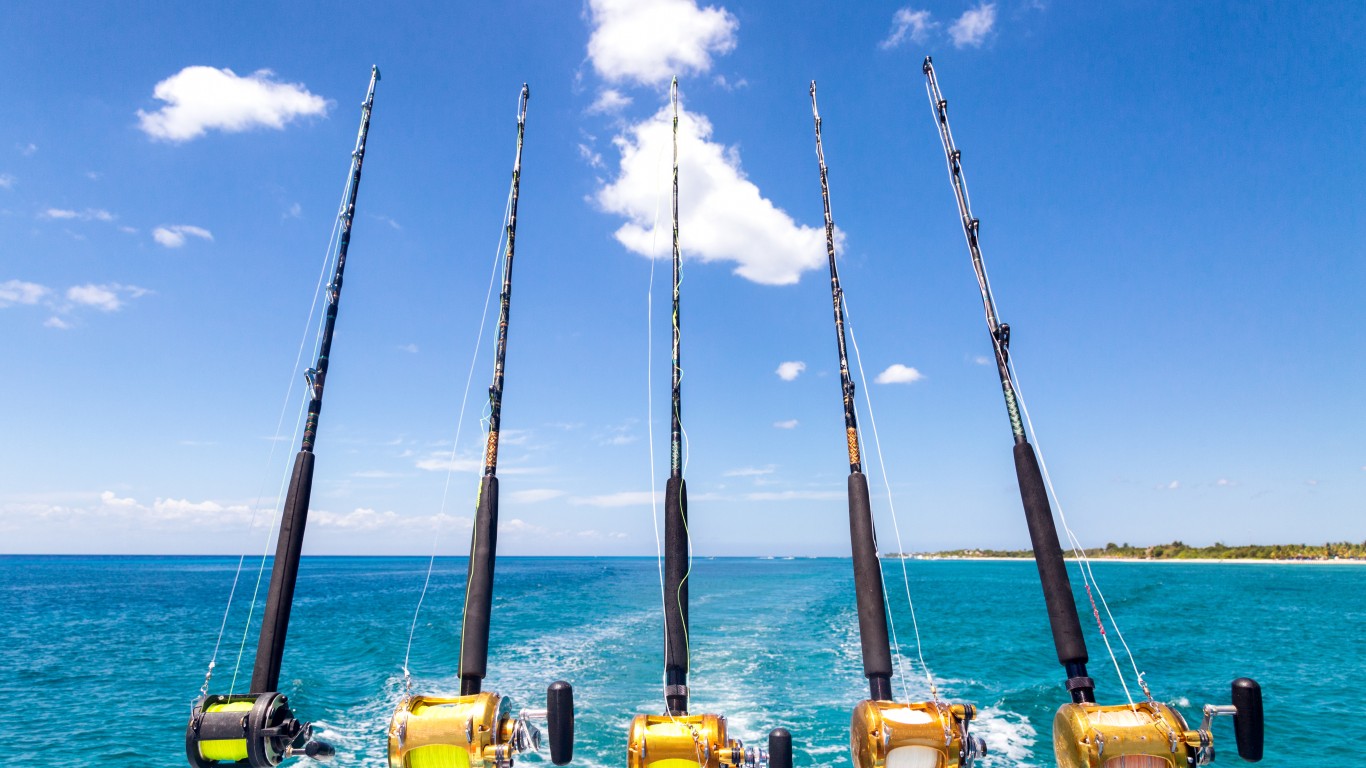
The largest fish in the U.S. are, of course, found in the ocean. Here are eight of the biggest saltwater fish on record in the United States.
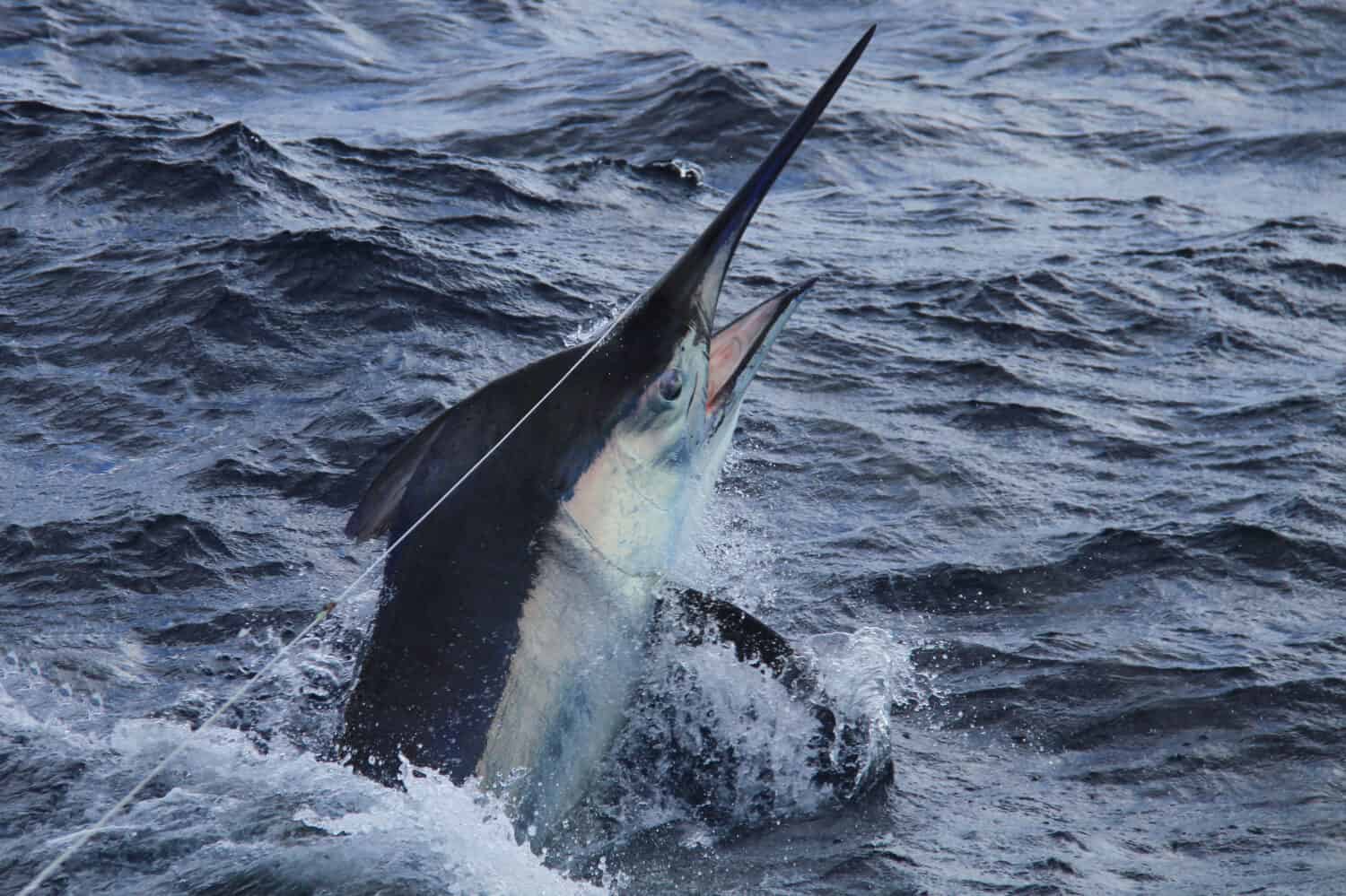
While this black marlin was a beast, it fell 355 pounds short of the world record. The world record black marlin was caught in 1953 in Peru.
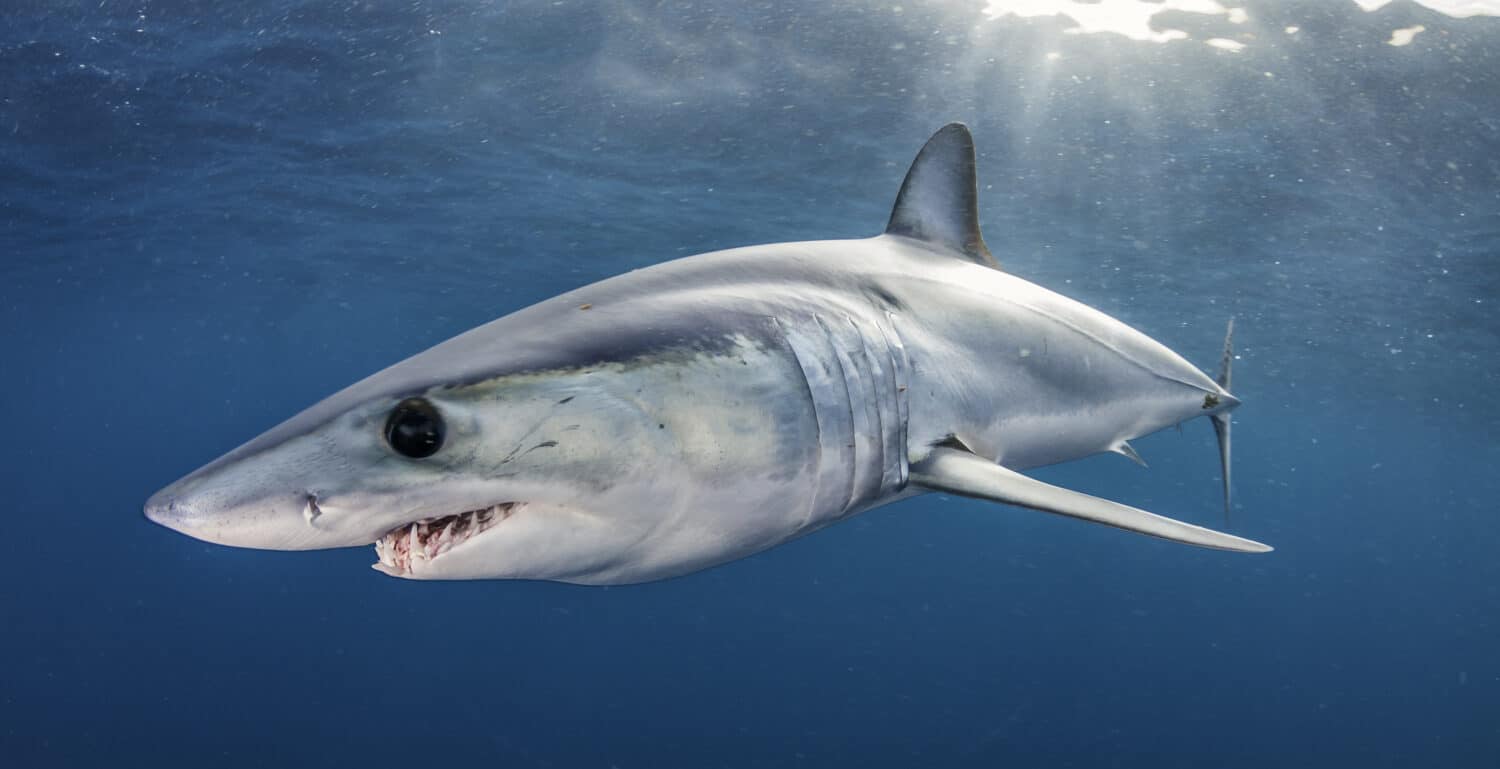
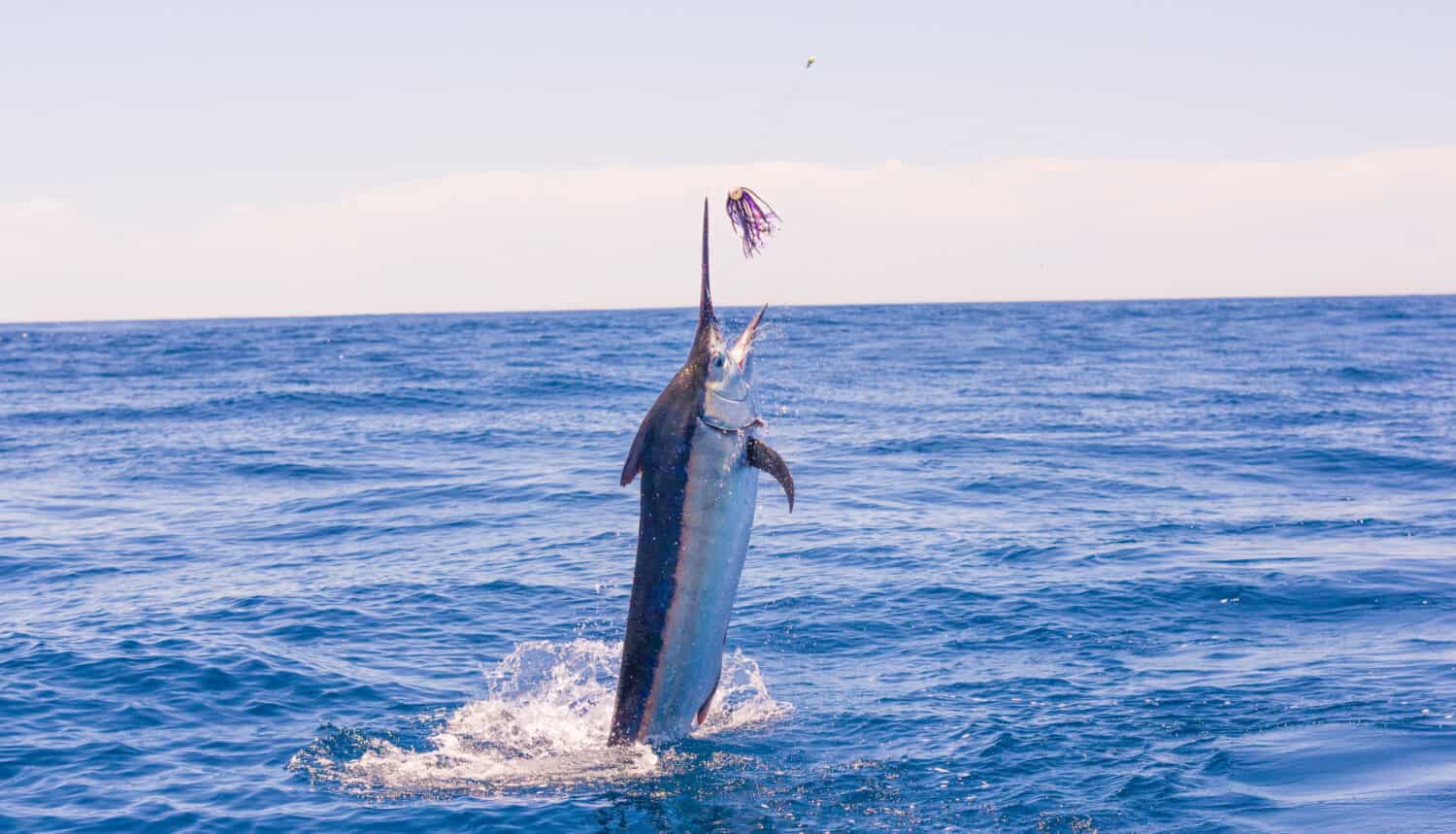
This U.S. record blue marlin weighed about 174 pounds less than the world record which was caught in Brazil in 1992.

The world record bluefin tuna weighed 1,496 pounds. It was caught in Nova Scotia, Canada in 1979.


This tiger shark caught in Cherry Grove, South Carolina is officially listed as a tie for the world record by IGFA. It is tied with a tiger shark that was caught in Australia in 2004. That fish weighed weighed 1785 pounds, 11 ounces.
To set a new world record per IGFA rules, a fish must outweigh the previous record by at least one-half of one percent of its total body weight. The tiger shark caught in South Carolina in 1964 weighed 1,780 pounds. One-half of one percent of 1,780 is 8.9. Since the tiger shark in Australia only outweighed it by 5 pounds, 11 ounces, it did not reach the threshold for a new world record. Therefore, the two tiger sharks are officially tied in the IGFA record book.

There is a discrepancy between the Hawaii state record and the official IGFA world record for the Pacific blue marlin. IGFA registered a 1,376-pound Pacific blue marlin as the world record. That fish was caught in Hawaii on May 31, 1982. Hawaii’s state record Pacific blue marlin, dating back to 1970, outweighed the official world record by 429 pounds.

This is possibly the most debated record in all of sportfishing. According to IGFA, the world record white shark was caught in Australia in 1959. That fish weighed 2,664 pounds, a full 786 pounds below the New York state record.
Don Braddick is the angler of record in New York State. He, along with legendary charter captain Frank Mundus, found this massive great white feeding on a whale carcass. They hooked the beast in the late afternoon on that August day in 1986. This white shark would land Braddick’s name in the New York record book, but not in the official world record book.
The reasons for Braddick’s disqualification by IGFA are not clear. The most plausible explanation is that, evidently, Mundus set the hook on the shark, and then Braddick took the rod from him to land the fish. According to IGFA rules, only one angler can be involved in landing a record fish, from the time the hook is set to the time the fish is secured.
Others have reported that Braddick’s shark was disqualified due to illegal chumming. Since the shark was found feeding on a whale carcass, IGFA could have interpreted that as illegal chumming that brought the shark into the area. This infraction of IGFA rules would nullify the catch.
New York’s Department of Environmental Conservation (DEC) lists Braddick’s catch in its official state records. It is the largest fish of record, not only in New York State but in the U.S. as a whole. In fact, it could potentially be the largest fish ever caught on a rod and reel anywhere in the world. However, it is also one of the most controversial due to the discordance among official record keepers.
While this record discrepancy of the biggest fish ever caught is frustrating, it is also somewhat poetic. As noted earlier, anglers love to tell “fish stories.” Arguing over the size of a fish is almost as ingrained in the sport as the tackle box or the rod and reel. So, in a way, it is rather fitting that the biggest fishing record in history would foment such intense debate. However, whether you agree with IGFA or New York’s DEC, one thing is certain…this is a fish story for the ages.
Start by taking a quick retirement quiz from SmartAsset that will match you with up to 3 financial advisors that serve your area and beyond in 5 minutes, or less.
Each advisor has been vetted by SmartAsset and is held to a fiduciary standard to act in your best interests.
Here’s how it works:
1. Answer SmartAsset advisor match quiz
2. Review your pre-screened matches at your leisure. Check out the advisors’ profiles.
3. Speak with advisors at no cost to you. Have an introductory call on the phone or introduction in person and choose whom to work with in the future
Thank you for reading! Have some feedback for us?
Contact the 24/7 Wall St. editorial team.